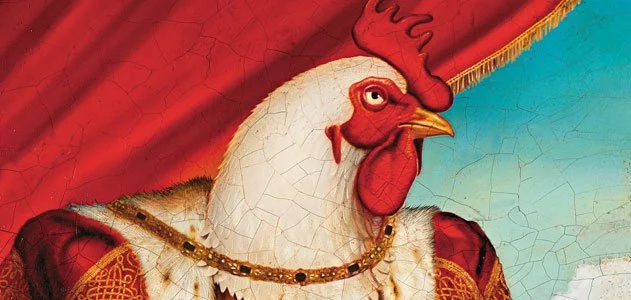 oday the consumption of chicken meat as well as eggs is considered to be common, but there used to be a time when eating chicken meat or its eggs was more taboo than eating cats or dogs today. A new discovery made by a team of researchers from the University of Cardiff in the United Kingdom shows evidence that chickens were once “man’s best friend” and not a menu option.
oday the consumption of chicken meat as well as eggs is considered to be common, but there used to be a time when eating chicken meat or its eggs was more taboo than eating cats or dogs today. A new discovery made by a team of researchers from the University of Cardiff in the United Kingdom shows evidence that chickens were once “man’s best friend” and not a menu option.
Evidence of Chicken Domestication
The research team had found bones of chickens from the iron age (1,200 B.C. — 600 B.C.) that are intact, showing no signs of being butchered and yet living in urban areas. You would imagine that the only reason a human would keep a chicken around is to eventually have it for dinner, but not in this case.
Dr. Julia Best, head of the research pointed out that based on the analysis of the bone structure of the chickens found, those chickens lived much longer lives than meat-reared chickens today. The bone structure also showed evidence of wounds that have healed with the medical care of humans.
“Many of the earliest dated chicken remains reported are from complete or nearly complete skeletons. For example, in Britain none of these earliest skeletons show evidence of butchery or human consumption; they are also often older animals. One specimen showed evidence of a fracture that had healed well, suggesting a level of human care.”
“All of these clues suggest that rather than being considered as a source of food, initially these early arrivals to northern Europe were more likely regarded as exotica, especially given their limited population size at the time. In some locations shortly after introduction we see chickens being buried with humans, showing that human-chicken relationships were complex and about more than just food for quite some time.” (Quote by Dr. Julia Best)
Interestingly enough, the bones that were used in this study were actually discovered in an ancient human grave. This does not only reinforce the belief of these chickens are being domesticated, but at the same time, archeologists believe that chickens were placed in human graves to act as a psychopomps with the role to lead the soul of a human to the afterlife.

The research team also compared the bone size as well as structure to modern chickens that had been raised on farms for commercial use. The iron age chickens had much larger bones in size, from the comparison we can say at least double the size, showing that not only did they live longer, but also more prosperous.
The History of Chicken Domestication
Based on all the research that has been done thus far, it is believed that chicken domestication started during the Neolithic revolution, about 10,000 years ago. Ancient Britons believed that chickens were exotic animals that needed to be treated with respect.
Although most people would expect the diet of late ancient humans to be quite carnivorous, it was actually more vegan than the average population today. Ancient Britons for example had a mixed diet of dry fruits, vegetables, and oats. This was discovered in much earlier research by analyzing the rotten teeth of ancient Britons.
Prof Naomi Sykes, from the University of Exeter, mentions that the relationship between humans and chickens during the process of domestication was very complex. Chickens were not only house pets, but actual special entities that were celebrated and venerated for centuries.
“Eating chickens is so common that people think we have never not eaten them. Our evidence shows that our past relationship with chickens was far more complex, and that for centuries chickens were celebrated and venerated.” (Quote by Prof Naomi Sykes)
It was not until AD 43 that the Romans arrived in Britain and turned the birds into a source of food. The population of Britons was sort of forced to adapt to this change and with each passing generation the veneration of chickens was forgotten and their taste enhanced.
Avid Writer with invaluable knowledge of Humanity!
Upcoming historian with over 30 million views online.
“You make your own life.”





